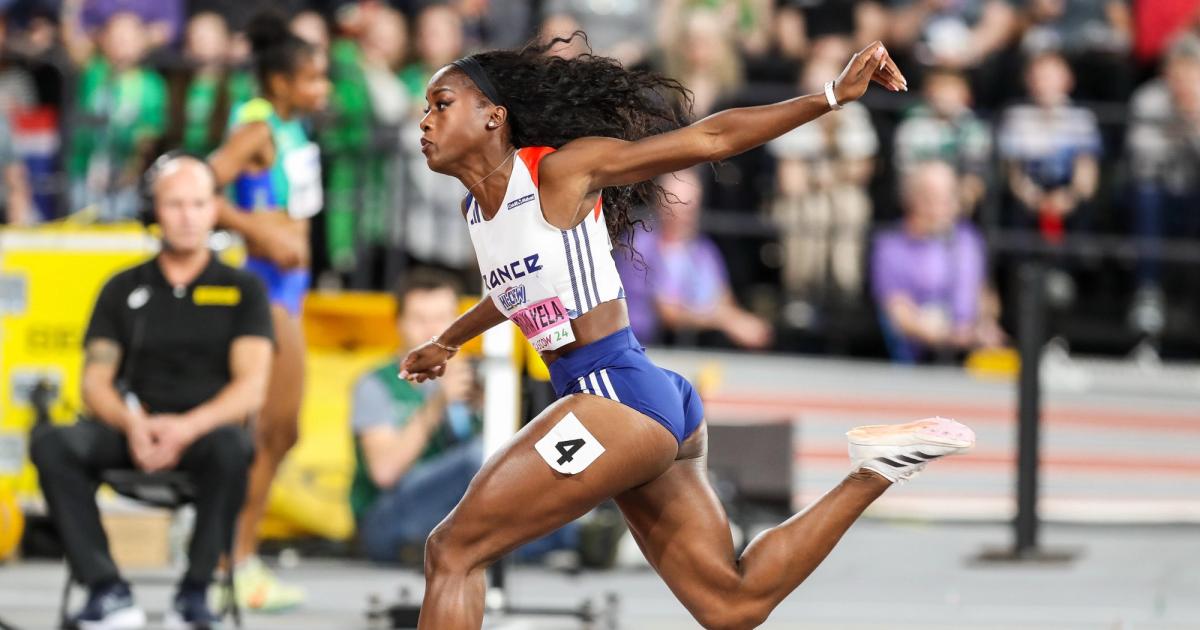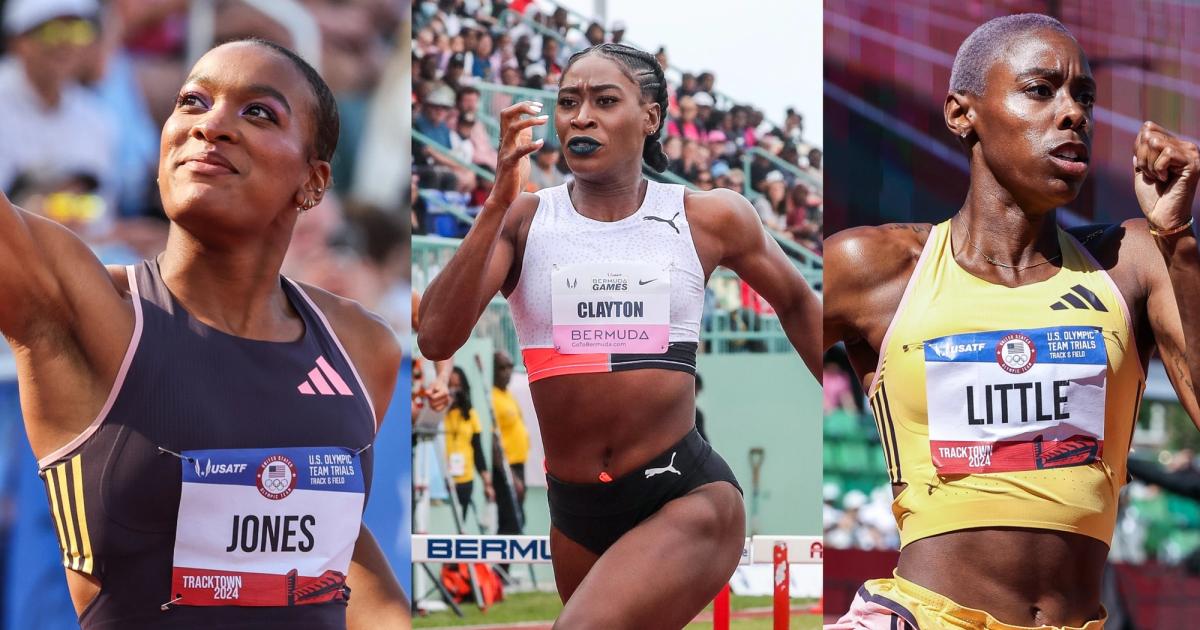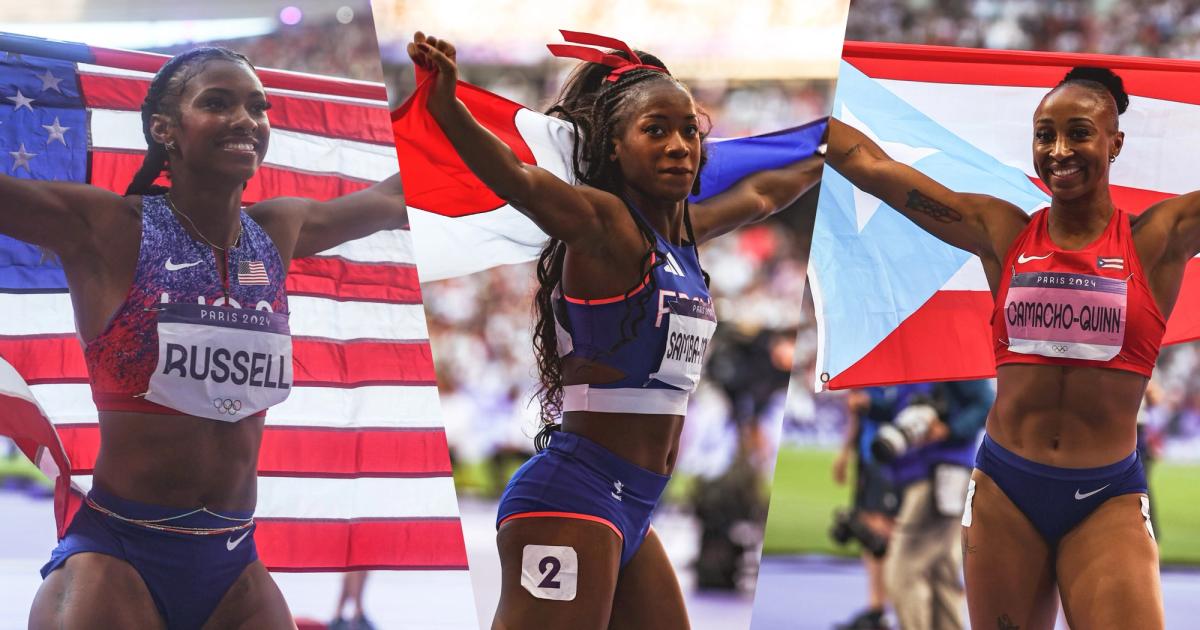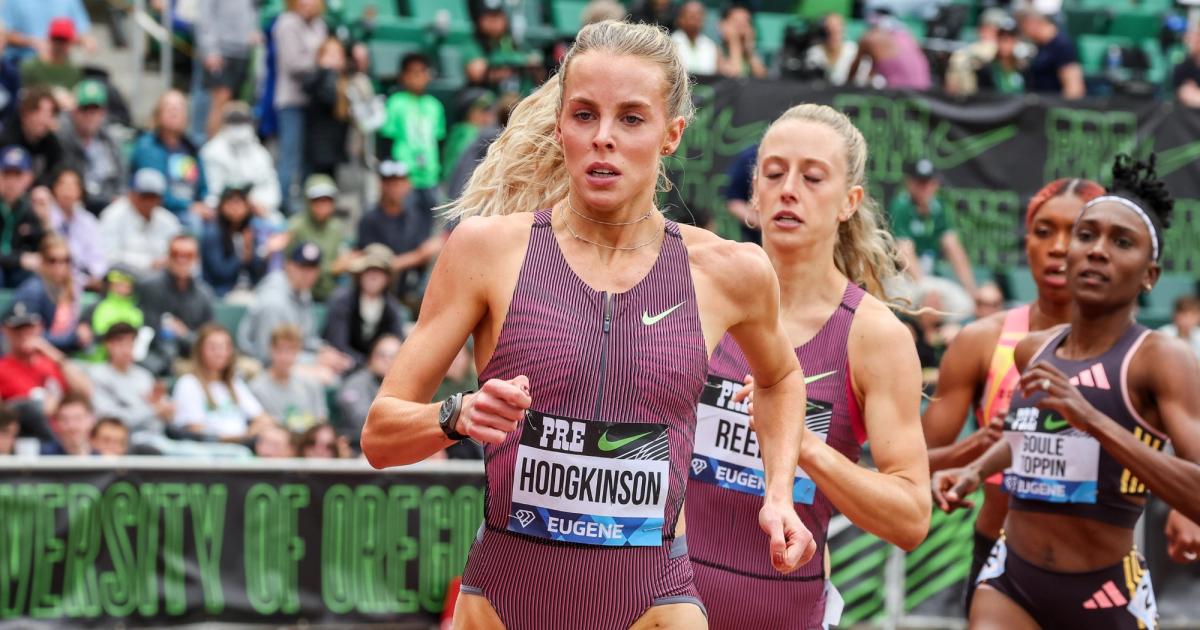By David Melly
March 12, 2025
If you’re one of the four or five people in the world who hasn’t become totally hooked on Ben Stiller’s thrilling TV dramedy Severance, here’s a quick, spoiler-free primer on the premise: in a sci-fi alternate reality, a procedure exists called “severance” that allows people to partition their work and home brains into two different entities, an “innie” persona and an “outie.”
Track and field hasn’t yet perfected this procedure, so for better or worse we’re stuck with sports stars whose off-the-track antics are deeply intertwined with their athletic careers. And conventional wisdom suggests that indoor track performances (assuming you actually compete indoors) are decent indicators of outdoor potential.
Let’s approach the following few paragraphs through the lens of this conventional wisdom.
The 60- and 100-meter dashes and their hurdles equivalents aren’t the same event, but they’re about as closely interrelated as two distances can be. The lack of a 100-meter dash indoors means that the straightaway sprints are where short sprinters are forced to meet for battle, much to the chagrin of “short” sprinters whose specialty is really the 200m. Given that World Indoors doesn’t quite carry the same prestige of its outdoor sibling, one of the common pastimes for sprint observers is to evaluate athletes’ 60m performances as a means of projecting improvements over 100m outdoors.
The most dramatic example of this is, of course, Noah Lyles’s ascent to the top of the 100-meter podium. It’s old news by now, but Lyles’s no-brainer solution to having unmatched top-end speed and an unremarkable start was to spend years honing the latter, eventually culminating in a 0.14-second improvement in the 60m and a World Indoor silver. More importantly, it also directly contributed to his transformation from 200-meter runner who couldn’t make multiple U.S. teams in the 100m to World and Olympic titles in the latter.
But is conventional wisdom generally correct here? Does your innie’s 60-meter season translate directly to your outie’s summer success, or are the two events more distinct than we give them credit for?
There are a few ways to look at this. First, the simplest: does winning medals indoors mean you’ll win them outdoors too? Of the twelve World Indoor medalists over 60m/60H, only four picked up outdoor medals: Lyles, Julien Alfred, Grant Holloway, and Cyréna Samba-Mayela. Part of that is selection bias: of the Paris medalists, five skipped the indoor season entirely and another two (Fred Kerley and Rasheed Broadbell) only raced once. So the easiest conclusion to draw is that the indoor/outdoor severance is less about different skill sets and more about different pools of competition.
But Samba-Mayela’s 2024 season offers something to consider. The 24-year-old was certainly not a household name heading into the year, despite being the 2022 World Indoor champion in the 60m hurdles. Yet she came out a national hero with her Olympic silver in front of a home crowd in Paris and a European title, the first two international medals outdoors of her career. Though she took a step down the podium in Glasgow, she improved her PB from 7.78 to 7.73, as well as her consistency (she’d only broken 7.80 once in her career prior to last year).
Samba-Mayela’s incremental improvements indoors clearly helped create momentum for a breakthrough outdoors, but that system doesn’t work for everyone. For better or worse, Devynne Charlton may be the poster child for 60 meter severance. The reigning indoor champ went on an absolute tear last year, one that included two world records and five wins in six races. Charlton is the only woman in history to break 7.70 on multiple occasions, and she did it three times last year! But she’s never finished higher than fourth in a global final outdoors.
In fact, only two of the ten fastest female 60m hurdles of all time have global medals outdoors. On the other hand, all ten of the fastest men have global medals and five of them are Olympic champions. Of the four world record holders over 60m/60H, two (Holloway and 60m record holder Irina Privalova) have Olympic titles, although Privalova’s is weirdly in the 400m hurdles and not the 100m, where she’s only got a bronze. Like Charlton, Christian Coleman is inarguably better at the 60m than the 100m, holding the world record and two World Indoor titles, although with a 2019 100m title to his name it’s hard to argue the gap is as wide.
The athletes who truly appear to be “severed” tend to be the ones where the 60 meters happens to be their best event: the biggest weapons in their arsenal are preternatural starting ability and acceleration, so the event where the start takes up the highest percentage of the overall race is going to be their strength. But it’s not an insurmountable barrier. Holloway and Alfred are two examples of athletes who are untouchable over 60 meters, but they’re both so good at getting out hard that they can make it all the way down the homestretch in first.
The ones who tend to suffer most from the switch tend to be the ones who can make finals but not always podium: your Ewa Swobodas, your Aleia Hobbses, your Ackeem Blakes. It’ll be interesting to keep an eye on Denisha Cartwright and Ditaji Kambundji’s outies in the hurdles later this season. Both are coming off strong indoor campaigns but have yet to truly break through on the international level. Whether this year is the year they successfully translate the gains remains to be seen.
Much like its television equivalent, indoor/outdoor severance is an imperfect procedure that doesn’t seem to affect athletes in any uniform way. Rather than generating any hard scientific conclusion, indoor times are a bit of a Rorschach test: what you see says more about the subject than the result.
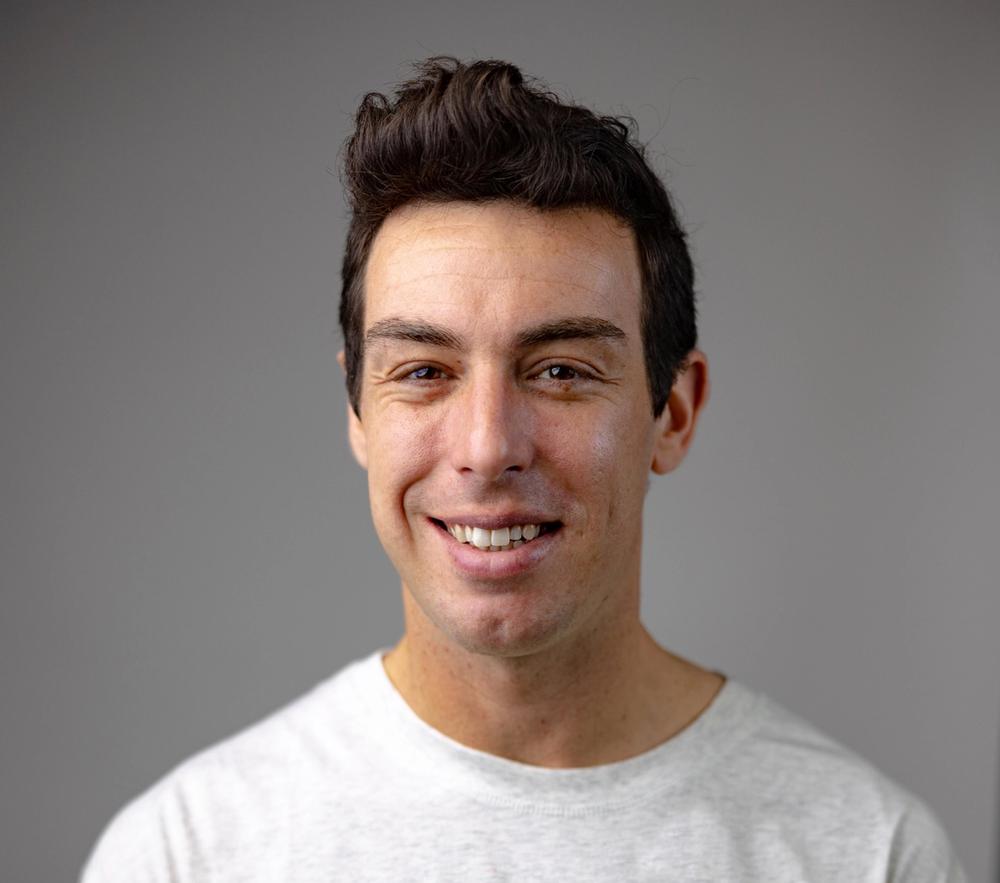
David Melly
David began contributing to CITIUS in 2018, and quickly cemented himself as an integral part of the team thanks to his quick wit, hot takes, undying love for the sport and willingness to get yelled at online.
